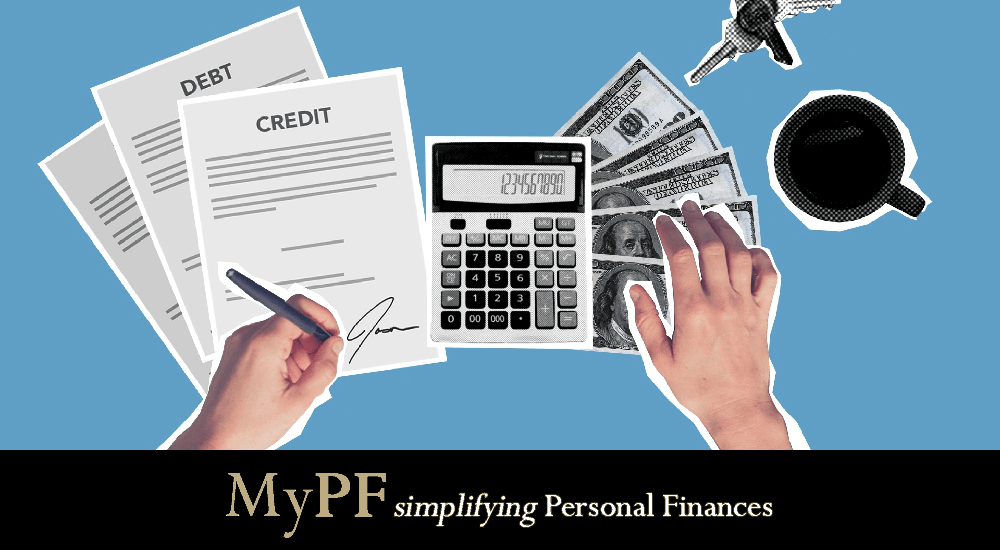This is a story of a client, Mr. A and his journey towards achieving total control of his financial situation and managing his cashflow.
Follow the story of my client, Mr. A, a single IT professional working in large financial institution in Kuala Lumpur. He wanted to grow his monthly savings rate and was looking to purchase a property for himself. He wanted to learn better ways to manage his monthly cashflow.
However, he had a mountain of debt to overcome first.
Contents
Client Stats
- Age: Early 30s
- Location: Kuala Lumpur
- Marital status: Single
- Debt Rate: RM5000 a month (credit card, personal loans, hire purchase)
- Savings rate: None
- Passive Income: None
- Expenses: RM2500 a month (high insurance payments & not including loans)
- Source of income: Salary
 Debt Management Problem
Debt Management Problem
Mr. A has high credit card and personal loans debt due to uncontrolled spending during his younger years. His monthly credit card and personal loans payments amount to almost 80% of his net income. His total credit card debt and personal loans debt is more than 15 times of his income.
This is what is known as a financial mistake that many other persons also experience. Choices we make when we are younger and less smart with our money tend to haunt us in later years.
On top of his high-interest debt issues, Mr A had bought several insurance plans that did not provide adequate coverage and required a large premium payment every month.
In short, Mr A was paying every month for mistakes made some time back, with nothing left to pay forward into any future plans.
Solutions & Planning
Before Mr. A can save more for his future goals, he needs to solve his debt repayment issue in order to create more cashflow. Moreover, by restructuring his insurance plans, he can lower his monthly insurance payments while getting the same or better level of coverage.
These is the plan we decided would best suit Mr A’s needs.
1. Risk management strategy:
- Restructuring his insurance plans. To adjust his insurance plans to achieve the same or better coverage while reducing monthly payment sum.
2. Debt management strategy:
- Managing credit card debt. Mr A’s credit card debt interests were at 18% per annum. This means that his annual rate of return has been negative due to the high interest rate incurred from this debt.
- To use the 4-month bonus his company had awarded him to clear 25% of his credit card debt.
- To use EPF iSinar withdrawal to clear some of his high-interest credit card debt. Credit card debt interest of 18% per annum versus EPF dividends of 5%-6% per annum, it was clear that this would be a wise move to take.
- To convert remaining credit card debt to lower-interest term loans with longer repayment tenure to reduce monthly repayment amount.
- Managing personal loans debt: To negotiate with banks to convert/consolidate personal loans to lower-interest loans. This would result in lower monthly repayments with lower interests.
Implementation and Result
1. Risk management:
- Mr. A managed to reduce his monthly insurance payments by half.
- He doubled his death and total permanent disability coverage, and have the same amount for critical illness cover which he didn’t have before.
- For his medical insurance, he was able to get a better rate for hospital room and board, with a higher annual and lifetime limit.
2. Debt management:
- Using iSinar and his 4-month company bonus, Mr A reduced his total credit card and personal loans debts by 40%. He reduced his monthly repayments by RM1k a month.
- Successfully negotiated with the banks to convert his credit card debts to longer tenure term loans and with lower interest rates. He reduced his monthly debt repayment by 1k a month.
- Total monthly debt repayment for credit card and personal loans reduced by 2k a month.
- Total monthly cashflow improved by RM2.5k a month. Debt payment reduced from RM5k to 3k a month.
Where previously he had a negative cashflow of RM1k a month, now he was seeing a surplus of RM1.5k a month. Mr A was finally feeling relieved, more in control of his financial situation, and excited to finally move forward.
With a surplus, Mr A could now look at planning his future money goals, rather than being fixated on resolving his past debt.
A Continuous Journey
From the beginning of our journey together, Mr. A understood the severity of his situation. He would take prompt action to negotiate with the banks and was willing to make difficult decisions to reduce his lifestyle spending. Luckily for him, he was also able to take advantage of the iSinar assistance available in the current pandemic situation and solve his debt issues.
My role as a financial planner is to act as an advisor and guide. There are some issues that can be solved with better products (like getting a better, but cheaper insurance plan), but ultimately the rest of the actions is dependent on the client himself. I appreciate the trust Mr A put in my advice and I am happy for him that he took charge of his financial situation and is now in a much happier state.
While he continues to trust my professional advice, as his financial planner, I will continue to provide him with the best financial guidance I can give to see that Mr A continues to have a healthy financial life.
Q&A with Mr A
Q: How does it feel to have improved on your finances?
A: I feel happy and relieved. So much less stressed over my financial situation.
Q: What was the key benefit you realised on the importance of financial planning?
A: I realised the importance in having a clear action plan to solve my financial situation, and to execute the plan in a timely manner.
Q: What are your future plans for your life and financial journey?
A: I am looking to start my retirement savings and finally able to save towards the purchase of my first property
Are you heavily in debt and need help? Signup for a MyPF membership and get connected to a licensed financial planner.
MyPF Story is a series focusing on personal stories by licensed financial planners and Malaysians. If you have a story you would like to share, get in touch with us so we can document it.









Leave A Comment